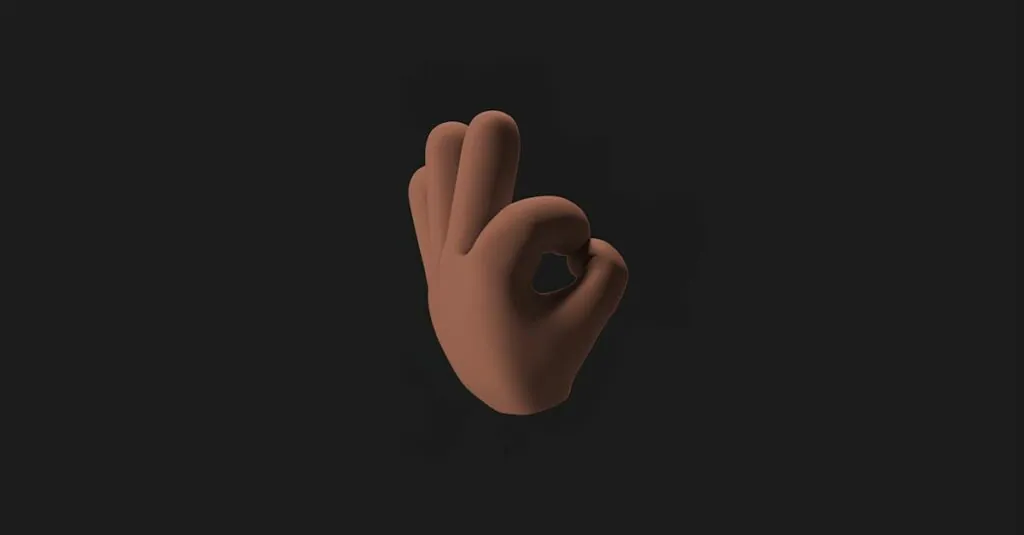Table of Contents
ToggleImagine diving into the vibrant world of Roblox, where every jump, every battle, and every epic dance-off feels almost real. Enter haptics, the secret sauce that adds a whole new layer of excitement to gameplay. It’s like the cherry on top of your favorite sundae, giving players a tactile experience that goes beyond just visuals and sounds.
What Is Haptics In Roblox?
Haptics in Roblox refers to the use of tactile feedback to enhance the gaming experience. Players feel sensations through vibrations, creating a sense of connection with the virtual environment. Implementations range from simple vibrations to complex feedback systems that mimic real-world interactions.
Multiple developers integrate haptic technology in their games to elevate immersion. For instance, a player might feel a rumble during an explosion or a subtle vibration when interacting with objects. Such feedback deepens engagement, making actions within the game feel more significant and authentic.
Recent updates in the Roblox platform expand the possibilities of haptic feedback. With advanced hardware support, developers can experiment with more nuanced responses, providing players with tailored experiences. Games utilizing haptics engage users more effectively, encouraging longer play sessions.
Designers leverage haptics not just for excitement, but for functionality as well. Players receive alerts through vibrations, indicating successful actions or warnings about in-game events. This practical application enhances gameplay, ensuring players stay informed while immersed in their adventures.
Incorporating haptics presents opportunities for creativity. Developers can design unique feedback patterns that align with their game’s theme, making each experience distinct. Understanding the impact of haptics allows creators to push the boundaries of what’s possible in Roblox.
As the gaming landscape continues to evolve, haptic technology stands out as a crucial element. Engaging players at a sensory level enriches interactions, transforming simple gameplay into memorable experiences. Builders and developers across the platform recognize the value of haptic elements, embracing this trend to captivate their audiences.
The Importance Of Haptics In Gaming
Haptics play a vital role in enhancing the gaming experience. Players benefit from tactile feedback that connects them to the virtual environment.
Enhancing User Experience
User experience improves as haptic feedback delivers real-time sensations. Developers utilize vibrations for various in-game actions, creating a more dynamic interaction. For instance, when a player jumps or lands, they feel corresponding vibrations that signify success or contact. This immediate feedback keeps players engaged, reinforcing positive actions during gameplay. Furthermore, custom vibration patterns allow developers to tailor feedback to specific game themes, adding uniqueness to each experience. Engaging users effectively leads to increased enjoyment and retention, making haptics an essential element in game design.
Creating Immersion
Immersion reaches new heights with the integration of haptic technology. Players experience a deeper connection to the game as vibrations simulate real-world sensations. For example, when players walk over different terrains, distinct vibrations provide cues that indicate surface changes. These tactile sensations enhance the realism of gameplay, allowing users to feel as if they are truly part of the game world. Additionally, haptics can mimic environmental events, like weather changes, further immersing players. Engaging senses beyond sight and sound creates a memorable and captivating gaming experience.
Types Of Haptic Feedback In Roblox
Roblox offers various types of haptic feedback that elevate the gaming experience. These feedback systems enhance immersion through tactile sensations tied to in-game actions.
Vibration Feedback
Vibration feedback serves as the most common form of haptic response in Roblox. Players feel vibrations during key actions like jumping, running, or colliding with objects. This immediate feedback reinforces actions and can signal achievements or important events. Developers can customize vibration intensities and patterns, allowing unique interactions for each game. For example, a platformer may use strong vibrations for landing, while a puzzle game may implement softer, rhythmic vibrations during a successful solve. The flexibility in vibration settings enables diverse experiences across various game genres.
Force Feedback
Force feedback provides a more dynamic haptic experience in Roblox. This form of feedback simulates resistance or force against player actions, creating a sense of weight and impact. For instance, when a character swings a sword in a combat game, players feel the resistance through their controllers, enhancing that moment’s excitement. Developers can program varying levels of force to match the intensity of actions, from gentle nudges during minor interactions to robust feedback during significant events like explosions. This type of feedback deepens user engagement, making interactions with the game world feel more realistic and impactful.
Implementing Haptics In Roblox Games
Integrating haptics in Roblox enhances gameplay immersion. Developers can effectively utilize existing tools within Roblox Studio to incorporate tactile feedback.
Using Roblox Studio
Roblox Studio provides an accessible platform for haptic integration. Developers can locate haptic components in the toolbox and incorporate them into their game projects. Users may add haptic feedback elements to scripts, enhancing interactions. Simple drag-and-drop functionality enables easy implementation. Previewing haptic effects during development allows for adjustments and refinements. Testing in various gameplay scenarios ensures feedback aligns with user experience goals.
Scripting Haptic Effects
Scripting haptic effects requires specific coding techniques. Developers utilize the Roblox Lua programming language to create customized feedback. Certain functions trigger vibrations during key events, such as jumps or collisions. Adjusting parameters in scripts permits modulation of vibration intensity and duration. Incorporating conditionals ensures haptic responses trigger appropriately based on player actions. Experimentation with different vibration patterns creates unique experiences tailored to gameplay themes. Effective scripting deepens player engagement and enriches overall gaming enjoyment.
Future Of Haptics In Roblox
Advancements in haptic technology promise a transformative future for Roblox gaming experiences. Developers expect to integrate more sophisticated feedback systems, providing deeper sensory engagement. Increased compatibility with high-end haptic devices may allow for even more realistic interactions, amplifying immersion for players.
Emerging trends suggest the development of custom haptic patterns that resonate with specific gameplay mechanics. This personalization enhances the connection players feel with their game environments. The potential for cross-platform integration implies that haptic experiences might extend beyond Roblox to include other gaming mediums.
Investments in research indicate a strong industry interest in refining tactile feedback systems. Developers could experiment with multi-sensory effects, combining haptics with auditory and visual stimuli for comprehensive engagement. Engaging senses through varied feedback techniques may inspire new gameplay genres and creative concepts.
Haptics may also play a crucial role in accessibility, helping players with disabilities enjoy a more inclusive gaming environment. Customizable settings could allow players to adjust haptic responses to their needs, ensuring everyone benefits from rich gaming experiences. As Roblox continues to evolve, the platform will likely prioritize haptic innovation, leading to more captivating interactions.
Staying informed about haptic trends becomes essential for developers wishing to remain competitive. The evolution of tactile feedback will significantly influence player retention and engagement. Exploring these developments will reveal exciting opportunities for both creators and players as the Roblox community embraces the future of haptics.
Haptics in Roblox is reshaping the way players interact with virtual worlds. By integrating tactile feedback, developers are creating more immersive experiences that resonate with users on multiple levels. This technology not only enhances gameplay but also opens avenues for creativity and innovation within game design.
As haptic technology continues to evolve, Roblox developers have the opportunity to craft unique experiences that captivate audiences. The potential for more sophisticated feedback systems will undoubtedly elevate player engagement and satisfaction. Staying updated on haptic trends will be crucial for developers aiming to remain competitive in this dynamic gaming landscape.







